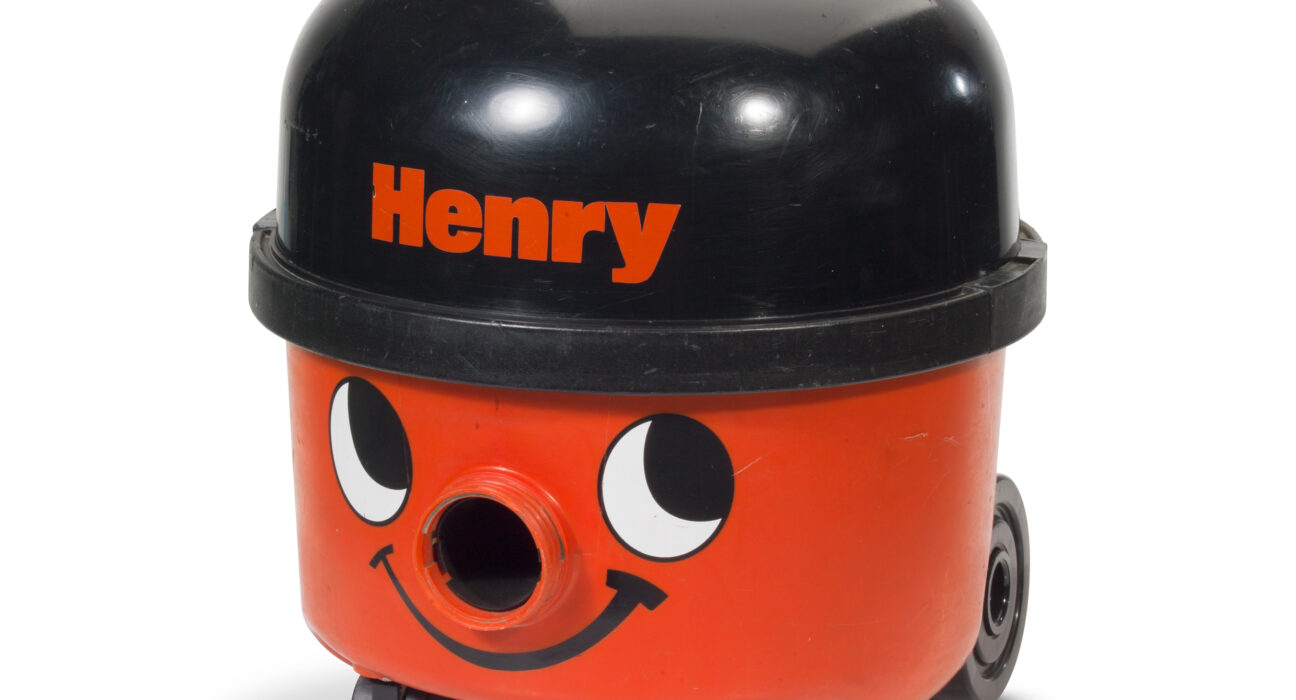I’ve never wanted a Henry. Never.
I already have far too many things with a face following me round the house – two dogs, a cat, a son, a husband…
In any case, I’ve been a Vax fanatic for 25 years – until the fateful day that my trusty 6131 bit the dust instead of sucking it up. The little orange wonder was a bit like Trigger’s broom. We had replaced so many bits, including the motor, over the years. It had sucked up everything from pooled water in the fridge to the crud at the bottom of a friend’s oil tank
But the Joy of Vax came to an end abruptly a couple of months ago. Bereft, I immediately ordered a new Vax model and excitedly (I know, I am that old) put it together and started to vacuum the house. It was terrible. I packaged it back up and took the dogs out for a walk…
The neighbours over the road were clearing their house and I asked if they had a vacuum cleaner for sale. Out came Henry, beaming crazily. Oh no, I thought. But for 20 quid it would do the job for now.
I fired it up… and fell in love.

Man, the suction on this thing!* You could lose an arm.
So when Beaminster Museum posted on Facebook that Henry was produced in the town for 20 years, I found myself getting sucked in (sorry) to the story.
The story of how Henry was born is fascinating.
Chris Duncan, now 83, started Numatic in Crewkerne in 1969, where he created his first commercial vacuum cleaner design for cleaning coal, oil and gas fired boilers.

At the beginning, the company employed six people in a tiny factory. The most sophisticated equipment they had was a drill.
Their first cleaners were made of a red oil drum, topped with a black washing up bowl. They sat on furniture castors. Incidentally, the thread of the modern Henrys still matches an oil drum thread.
By 1971, demand for Numatic vacuum cleaners had grown too big and Chris moved the business to a watermill in Yeovil. The watermill flooded often – but by then there was a Numatic machine to deal with that.

Their first serious commercial vacuum cleaners the NV-2 and NV-250 were all-steel machines that were truly built to last – Numatic still provides spares for them, 50 years later.
Numatic moved to Broadwindsor Road in Beaminster in 1974, in the old Perry and Perry garage building, where it stayed until 1994 before expanding hugely with a move to Chard.
Sally-Ann Hutchings worked there for nine years in the sales office from 1983.
She said: “I loved working there. We had a good team in the office and always had a great laugh. I only left because I was having a baby.
“I never went back as they were leaving to go to Chard.”

Numatic employee Robin Teague, who started work in the stores there in 1988 and moved with them to Chard and retired at 60, said: “We went from building 10,000 machines a month to building 20,000 a week.”
Chris is now believed to be worth more than £150m and much of this wealth has been accrued through the Henry series, which have found particular fans in children on the autism spectrum.
There are also countless Henry fan groups on Facebook.
Henry came to be quite by accident – bored at a trade show in the late 70s, Chris and one of the salesmen dressed up one of their machines and drew on a face, with the hose acting as a nose (a viral video shows Henry sucking up illicit substances, if you care to Google it).
They named him Henry and visitors to the trade show loved him.
Returning home, Chris had a face professionally designed for the little fella and Henry started to be sold.
Children’s wards, schools and night cleaners were enamoured of the little chap and Chris increased production.
In 1981, the name Henry was added to the hat/lid and almost by accident, Henry became a legend. A Henry was given to Prince Charles and Diana on their wedding day and one has been seen tucked away in 10 Downing Street’s press briefing room (this one has his own Twitter account).

The accidental hit snowballed and soon Numatic were busy making relatives for Henry, in the guise of the pink Hetty, plus grey James, blue Charles, green George, smaller green Harry, William, Edward and David. There’s also a yellow one, but he’s also called Henry.
Chris now has more than 1,000 staff and has produced well over 15million Henrys, beloved by kids, and tradespeople, who use him to reliably rid their sites of plaster and dust.
The move to Chard – after Somerset proved more willing to help with expansion costs than Dorset – has paid off, sadly at the expense of providing hundreds of jobs in Beaminster.
n Disclaimer: My 20 quid Henry is most likely more powerful than current models after a 2014 EU directive that manufacturers will not be able to make or import vacuum cleaners with a motor that exceeds 1,600 watts.
*You may not lose an arm with a modern model.




